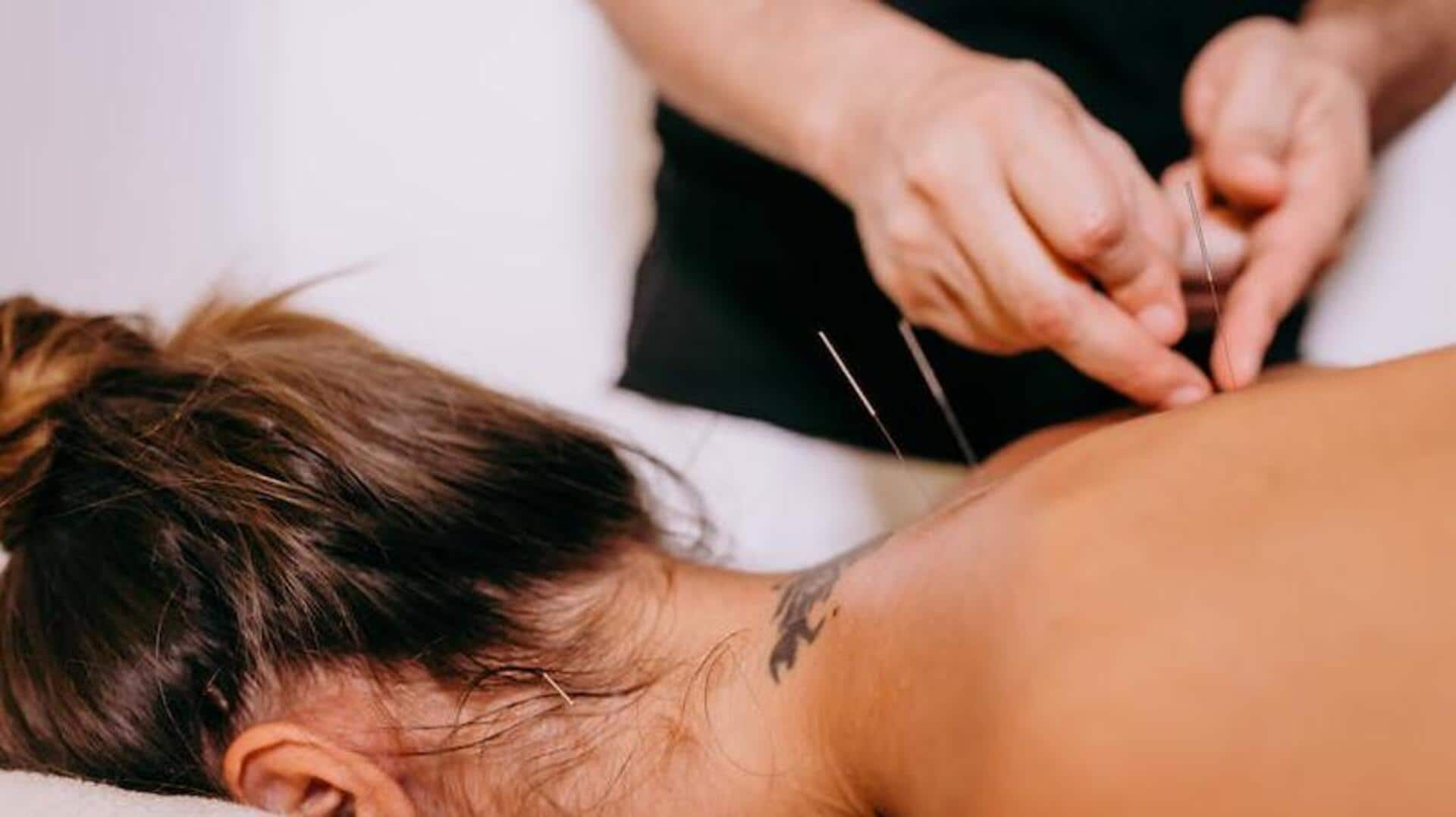
Needles of healing: Unraveling the process of acupuncture
What's the story
Acupuncture, a centuries-old traditional Chinese practice has transcended its ancient roots to become a globally recognized and respected form of holistic healing. Defined by the insertion of thin needles into specific points on the body, acupuncture is more than a therapeutic technique; it is a philosophy that seeks to restore balance and harmony within the body. Let's learn more about it.
Science
Science behind acupuncture
Traditional Chinese medicine practitioners believe that there are about 2,000 acupuncture points on the human body, connected by passageways known as meridians. The energy flow created by these routes circulates throughout the body and is in charge of maintaining general health. Disruption in these energy flows can cause diseases. Acupuncture is believed to enhance Qi flow by stimulating specific spots, leading to improved health.
Concept
What is done in acupuncture?
The technique of acupuncture involves inserting thin, solid, metallic needles into the skin, which are subsequently stimulated electrically or with precise, light hand movements by the practitioner. Acupuncture is used to control stress and alleviate pain as well as general wellness. Acupuncture practitioners feel that by placing needles at certain spots along these meridians, your energy flow will rebalance.
Process
Here's what the process feels like
During an acupuncture session, a practitioner conducts a thorough assessment of the patient's health and medical history before determining the appropriate acupuncture points. Hair-thin needles are used in the treatments. The insertion of needles is typically painless, with sensations ranging from tingling to a mild ache. Patients often report a deep sense of relaxation during and after the session. Some even report feeling energized.
Treatment
Why acupuncture?
The central nervous system is said to be stimulated by acupuncture spots. Chemicals are then released into the brain, spinal cord, and muscles. These metabolic alterations may encourage both physical and mental well-being and activate the body's inherent healing capacity. Acupuncture can be used to treat chemotherapy-induced and postoperative nausea and vomiting, headaches, dental pain, menstrual cramps, and lower back pain, among others.
Things to note
Some key things to note
Never rely on an acupuncturist's diagnosis of a medical condition. You might want to ask your doctor if acupuncture could be helpful if you have gotten a diagnosis. Acupuncture could be risky for those with a pacemaker, are pregnant, have breast or other implants, or have persistent skin issues that are prone to infections. If opting for acupuncture, consult a licensed acupuncturist.